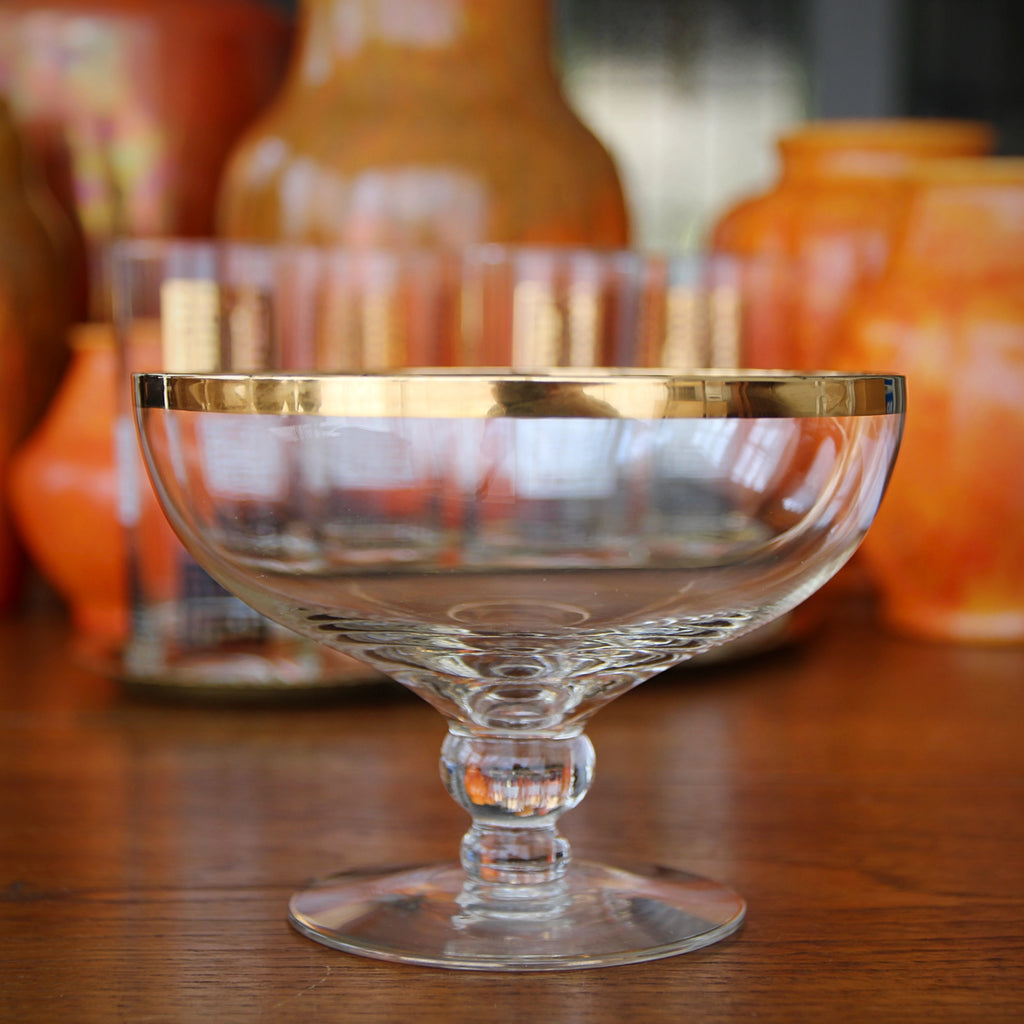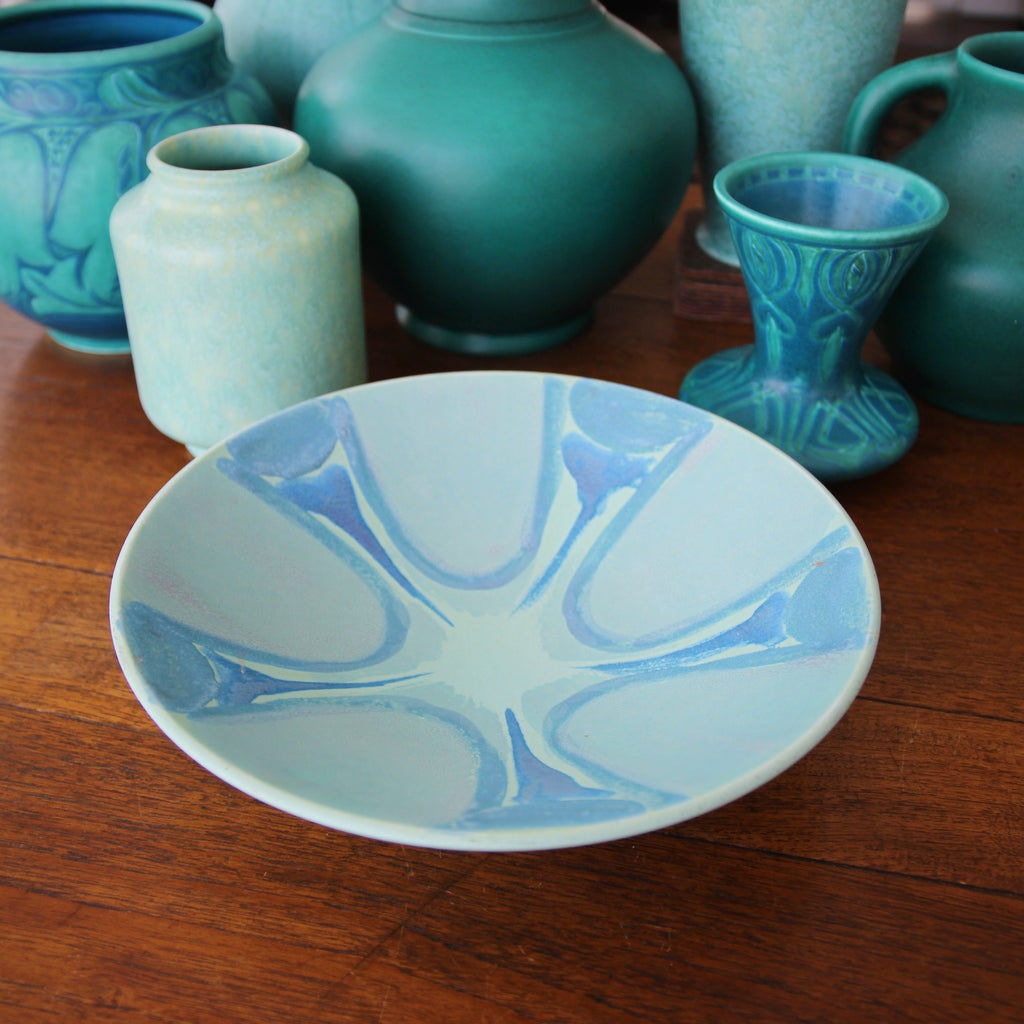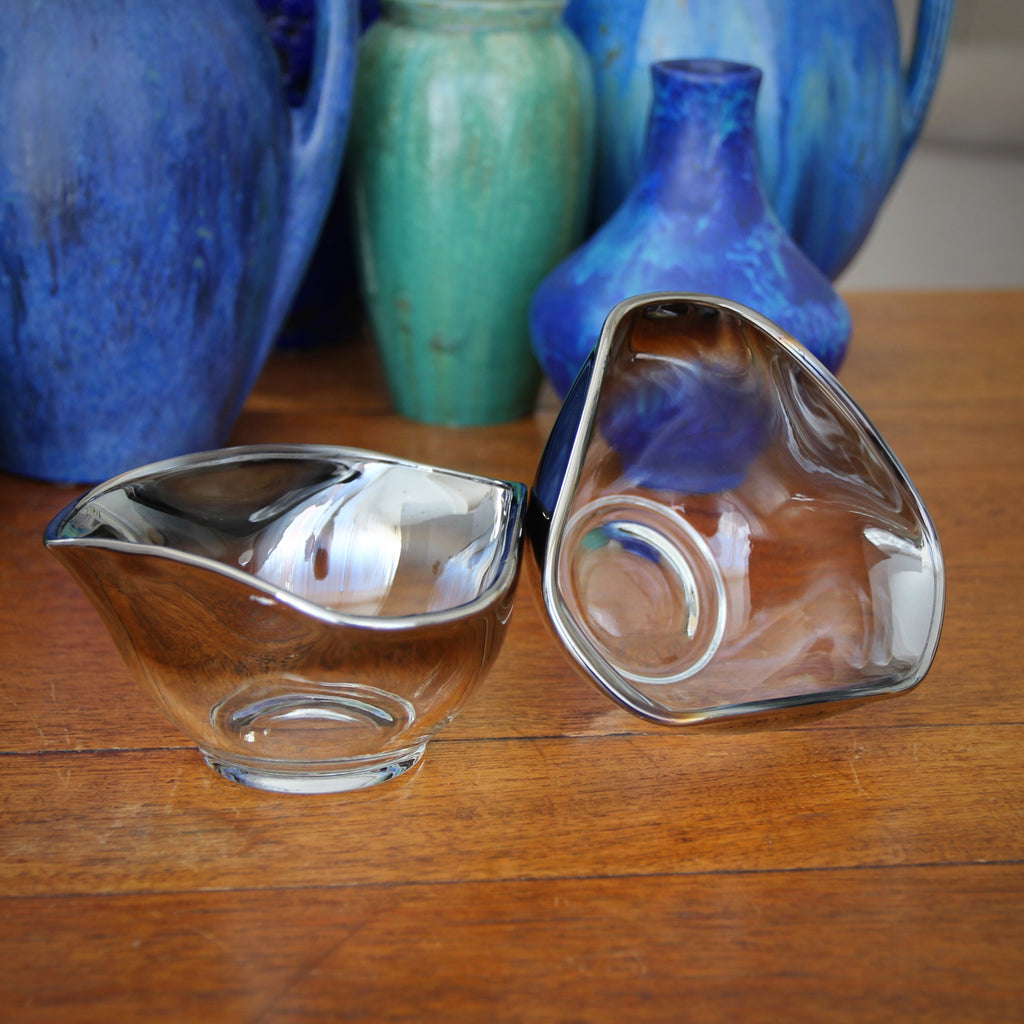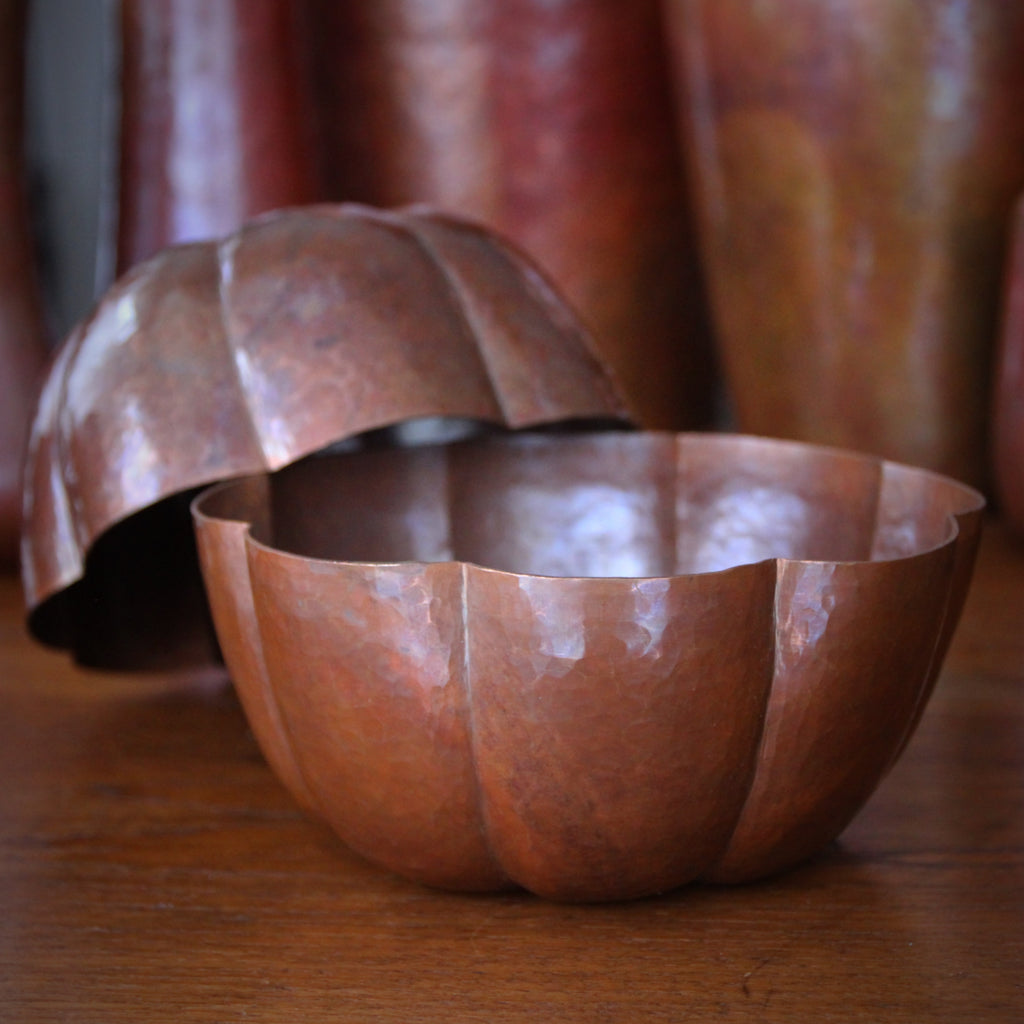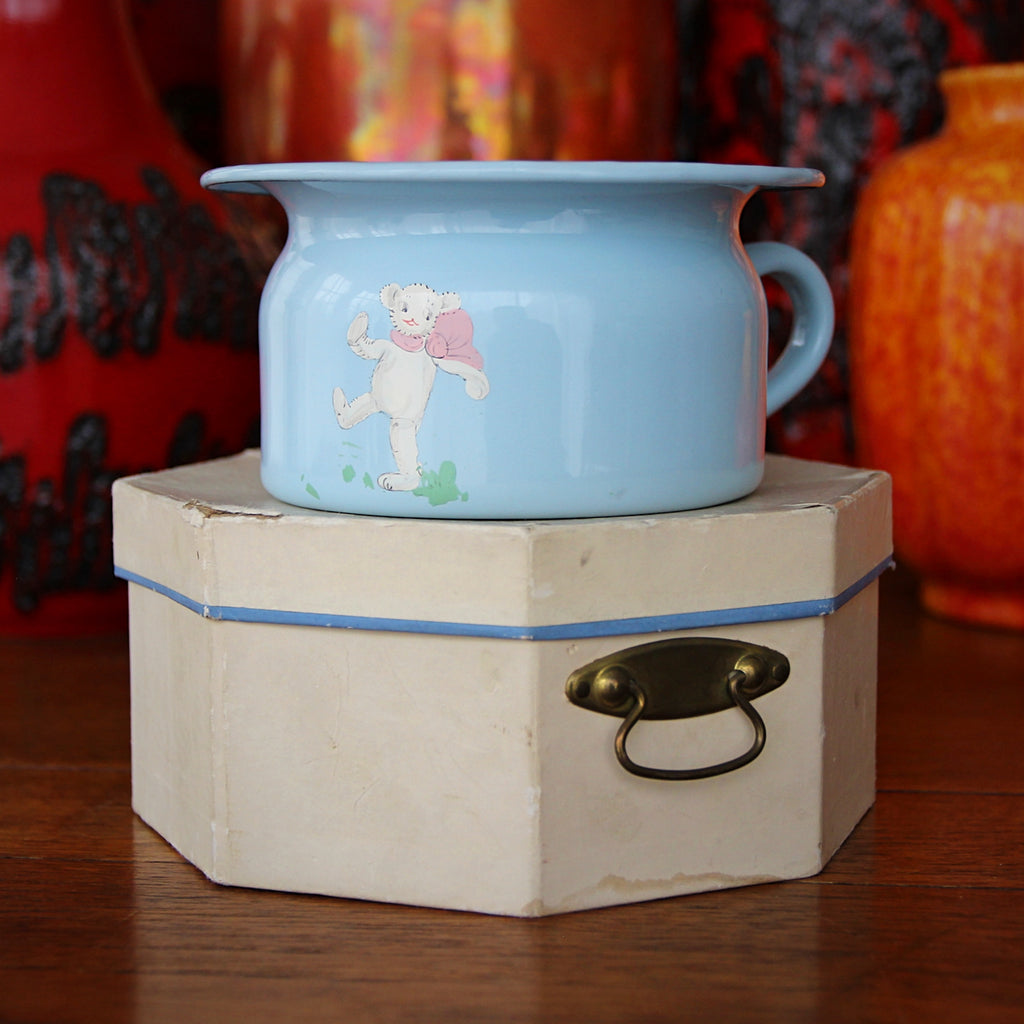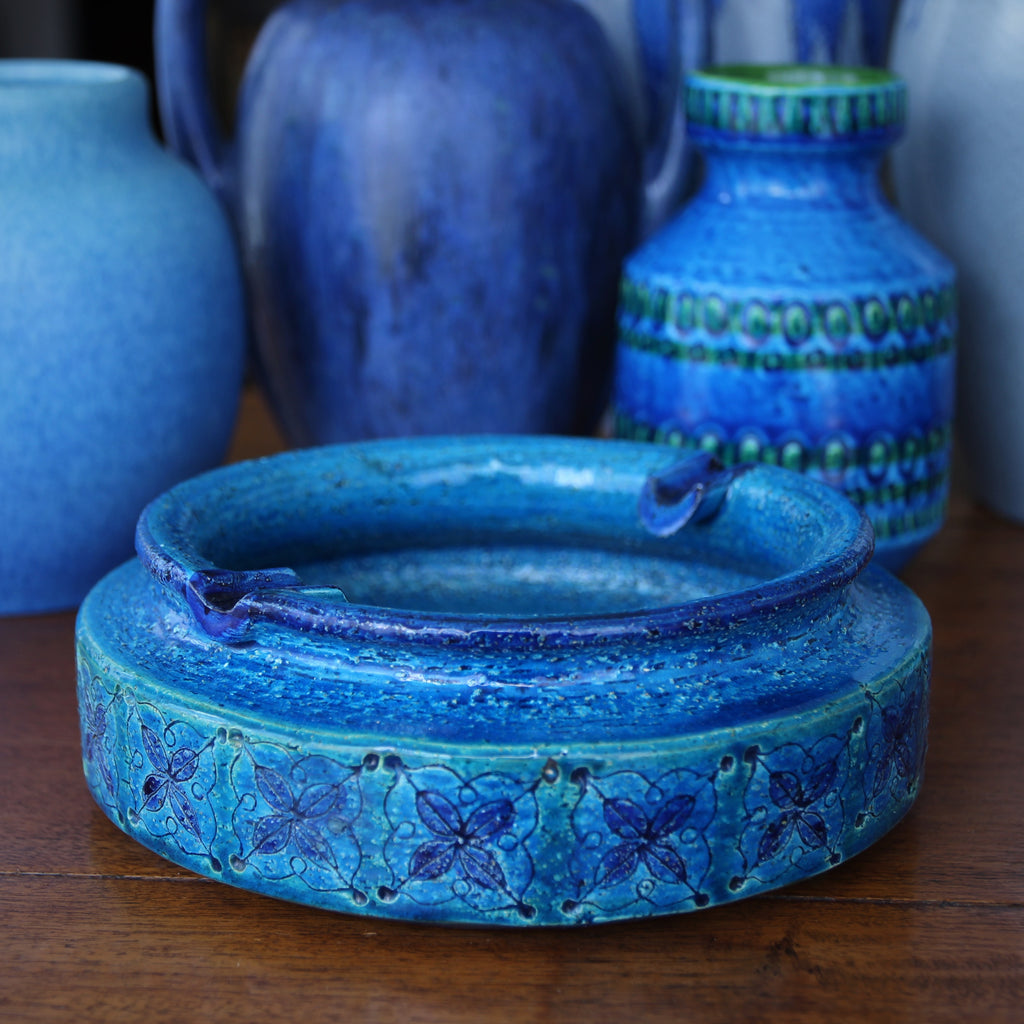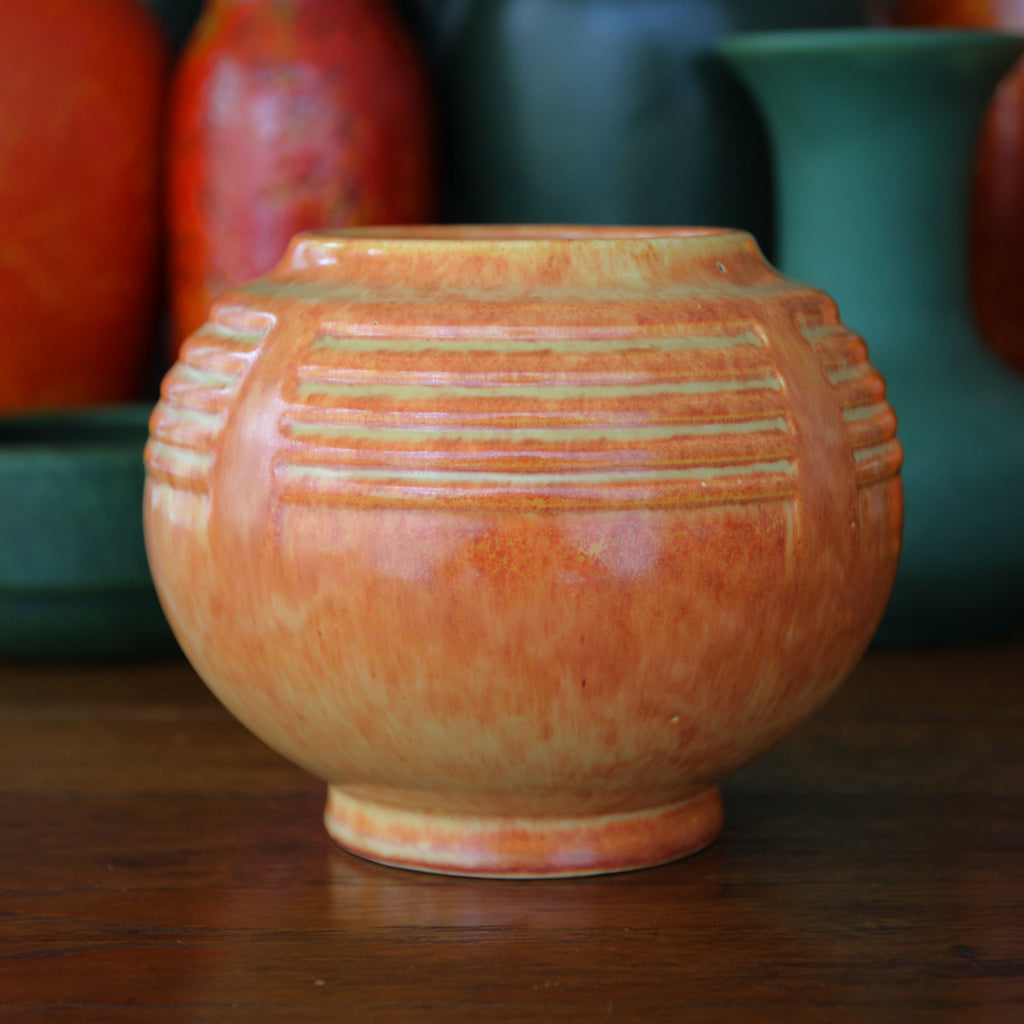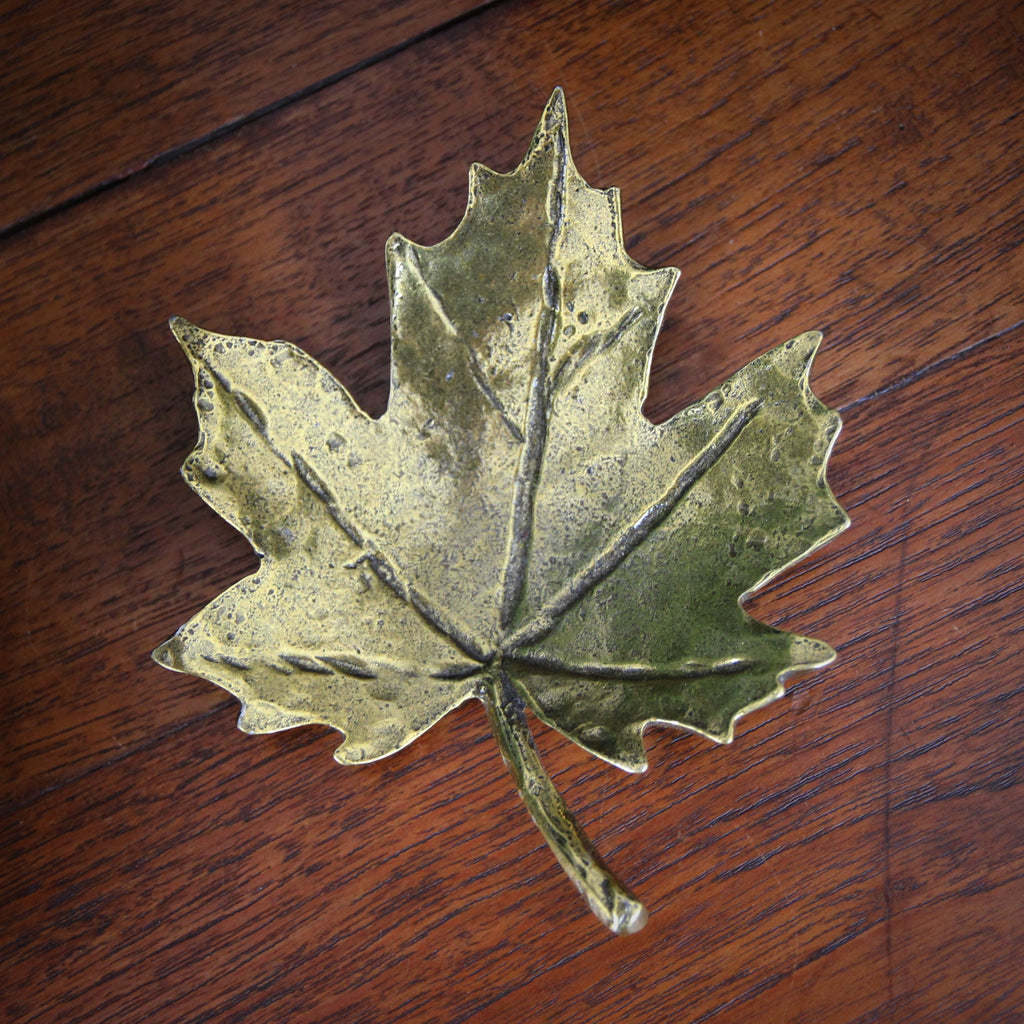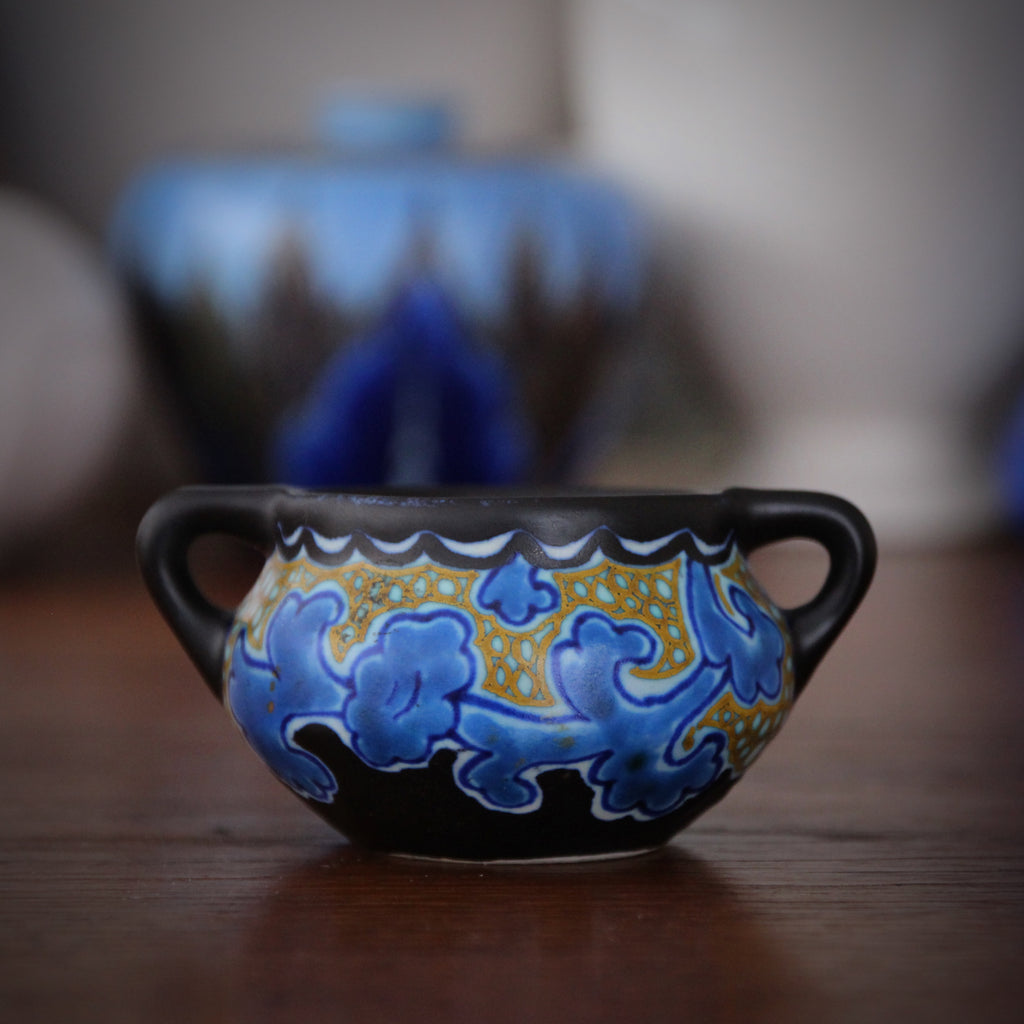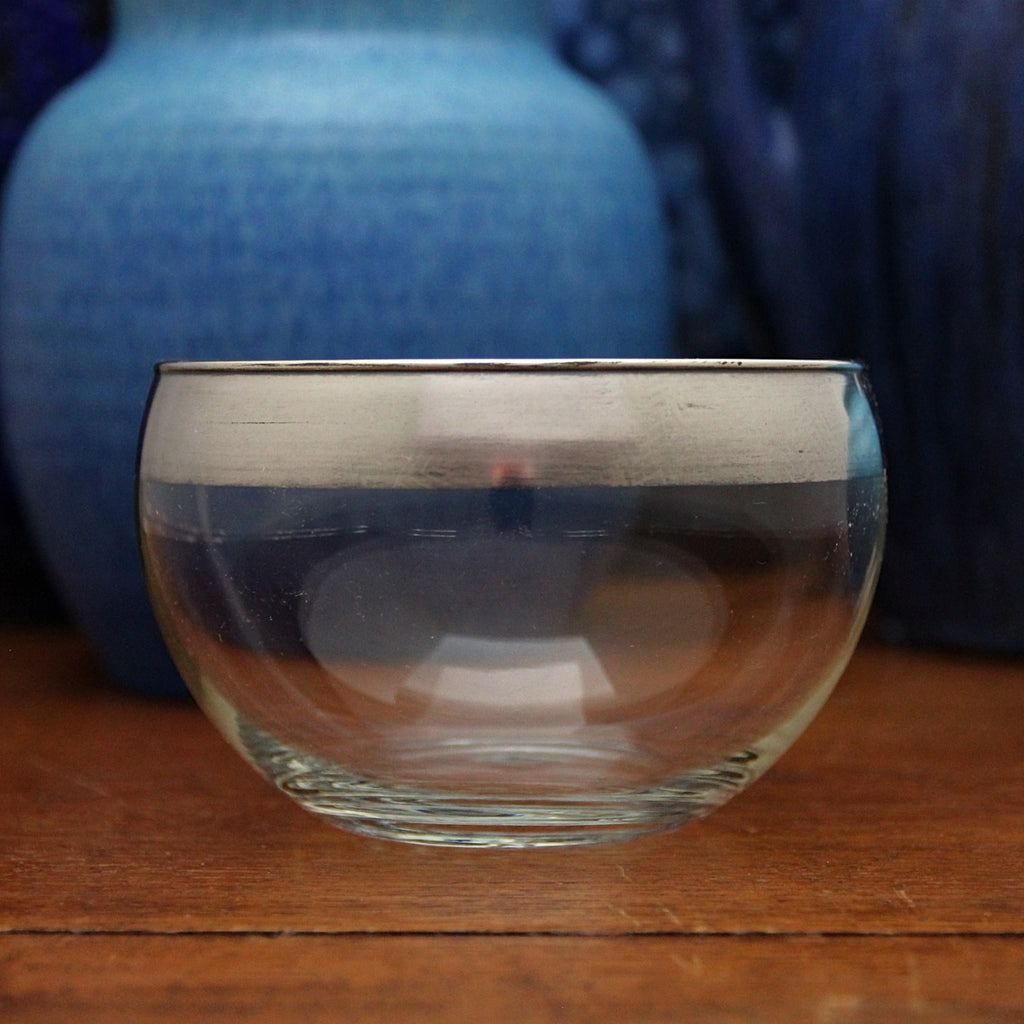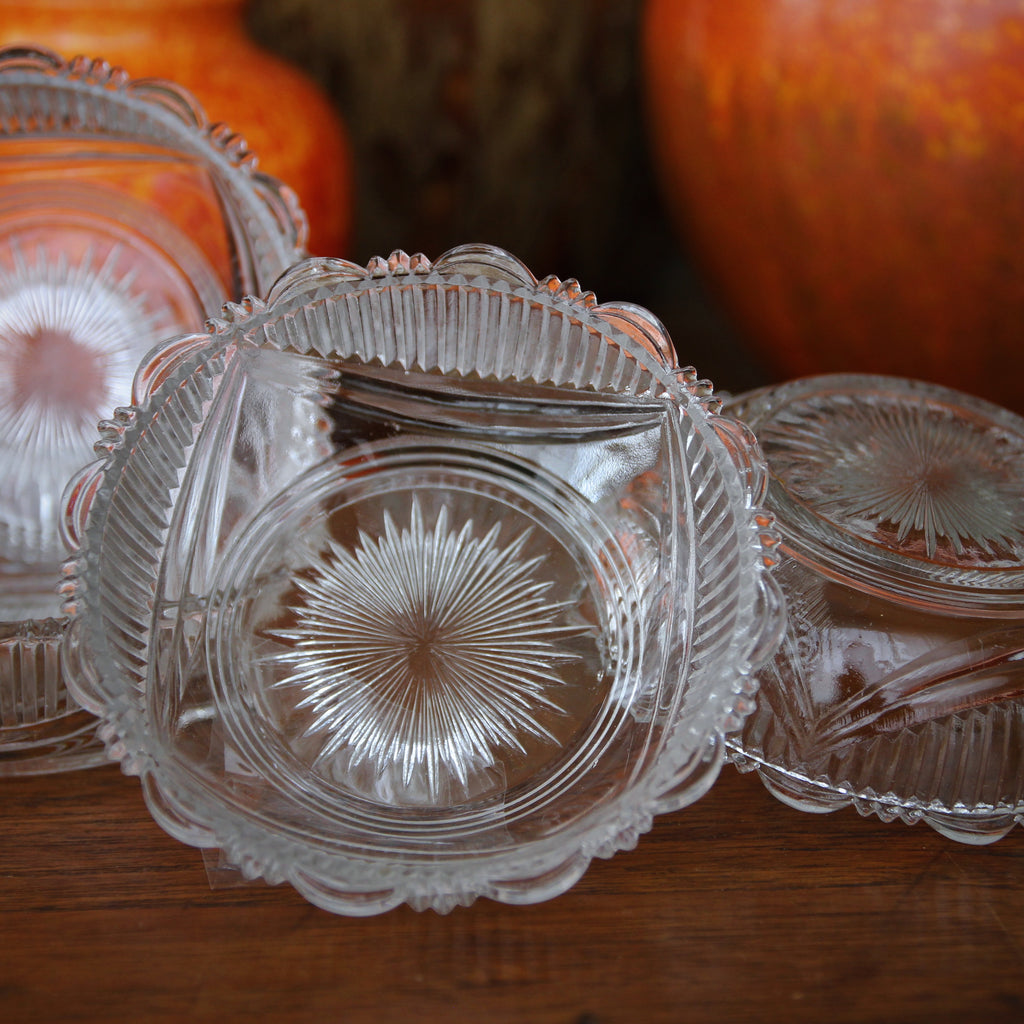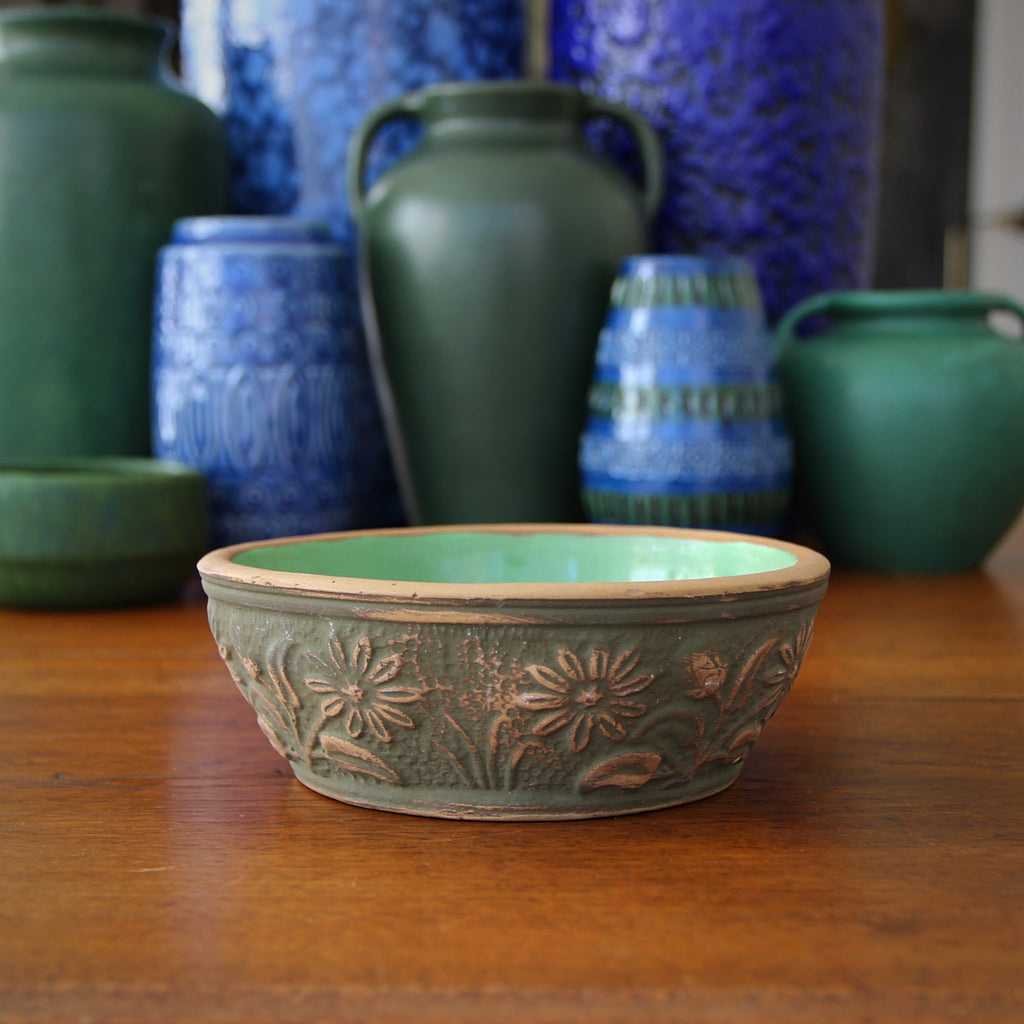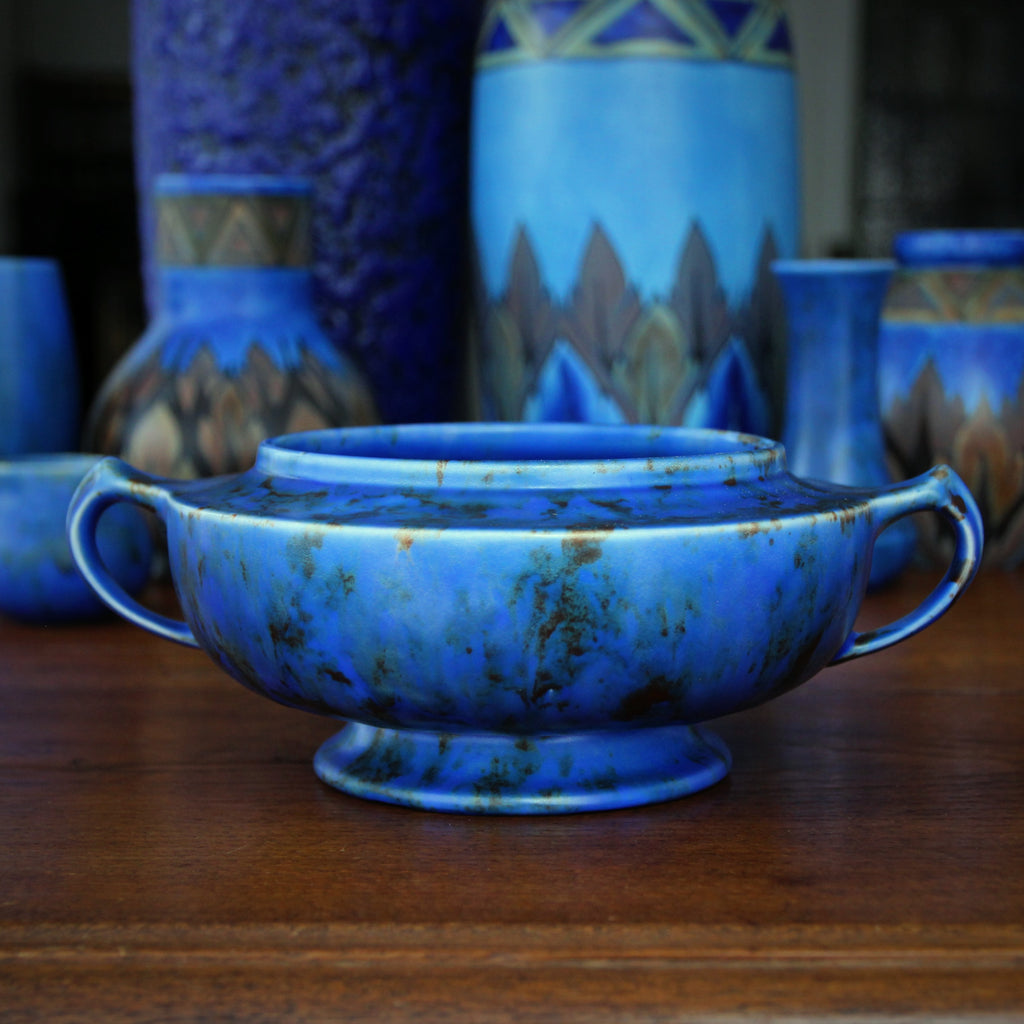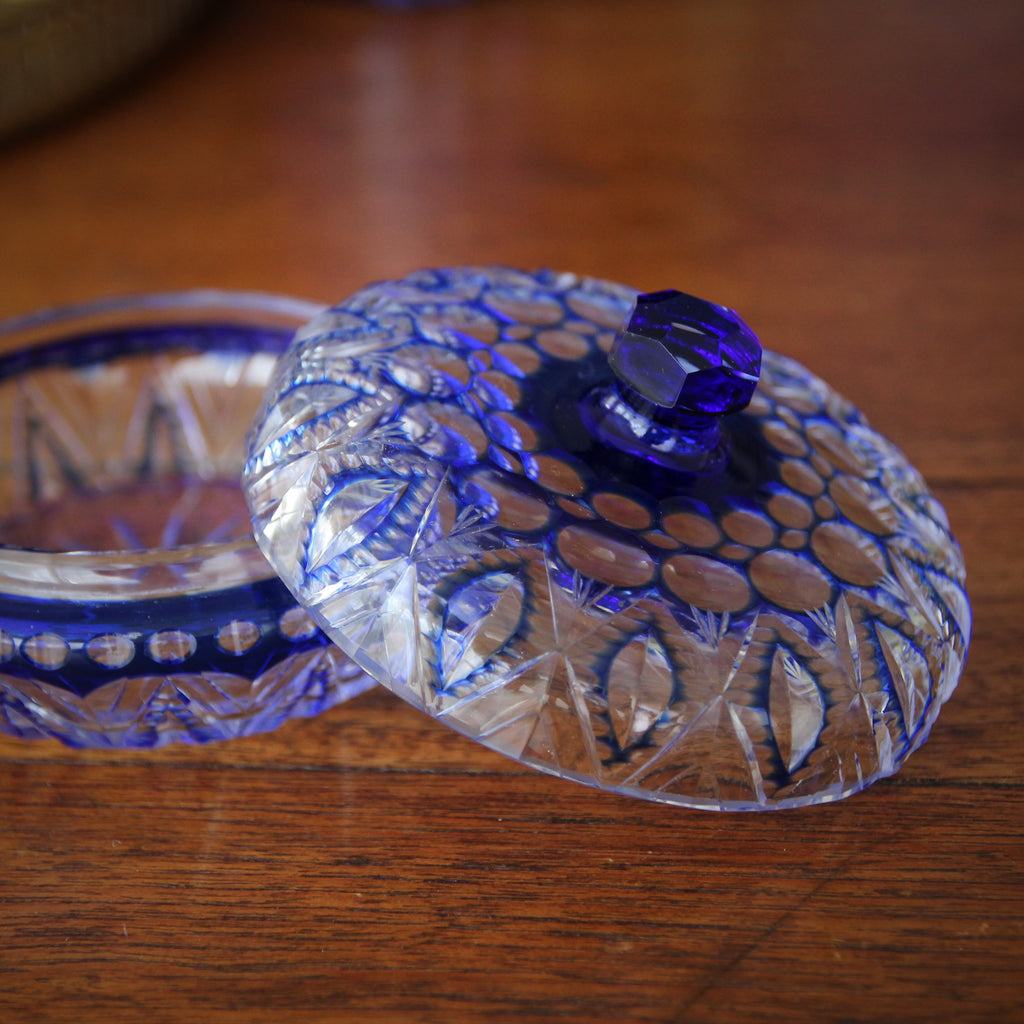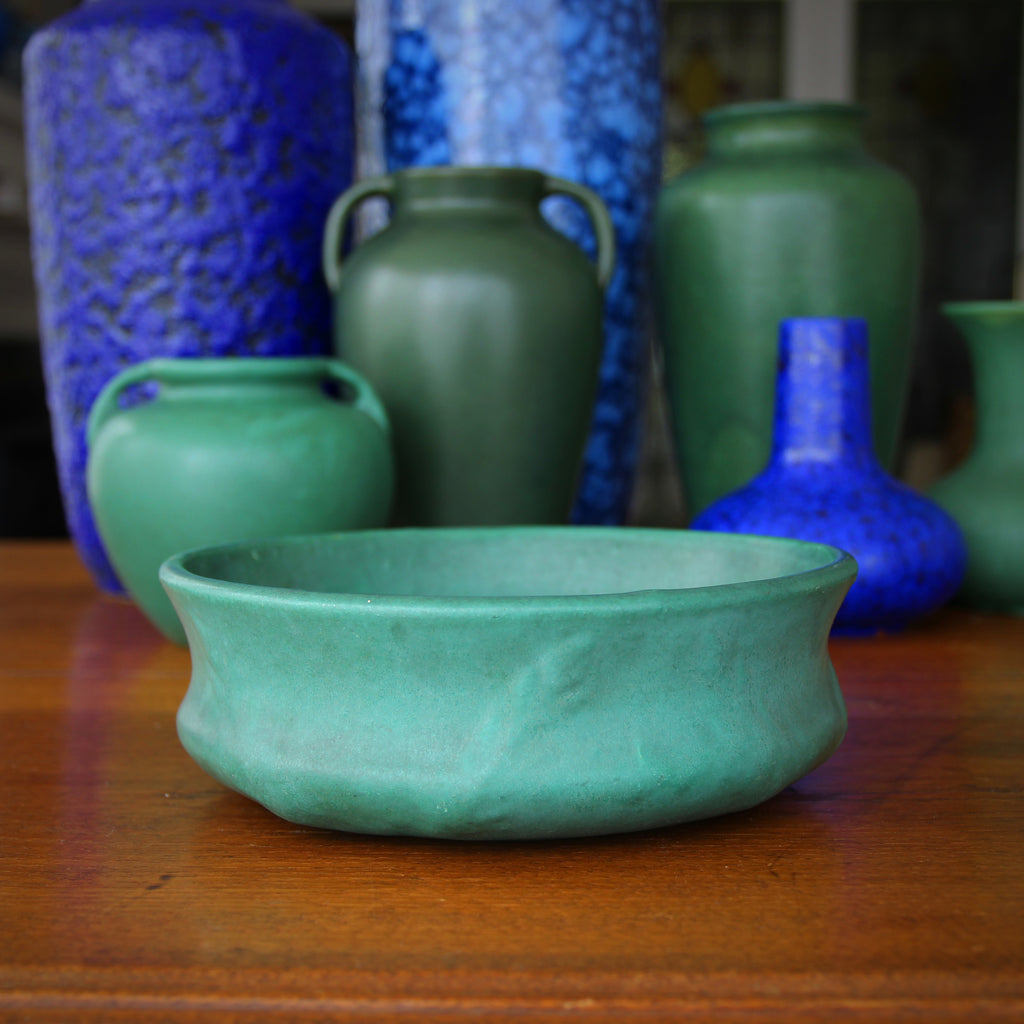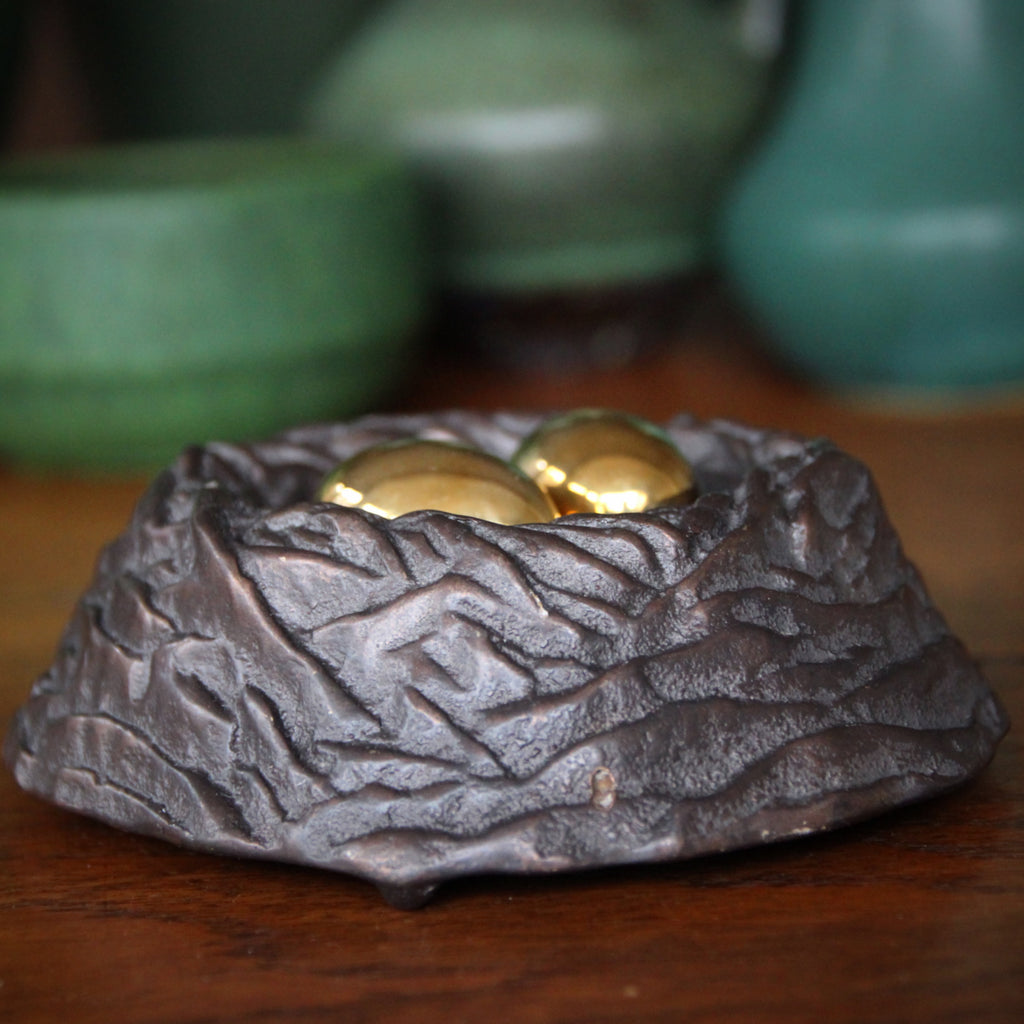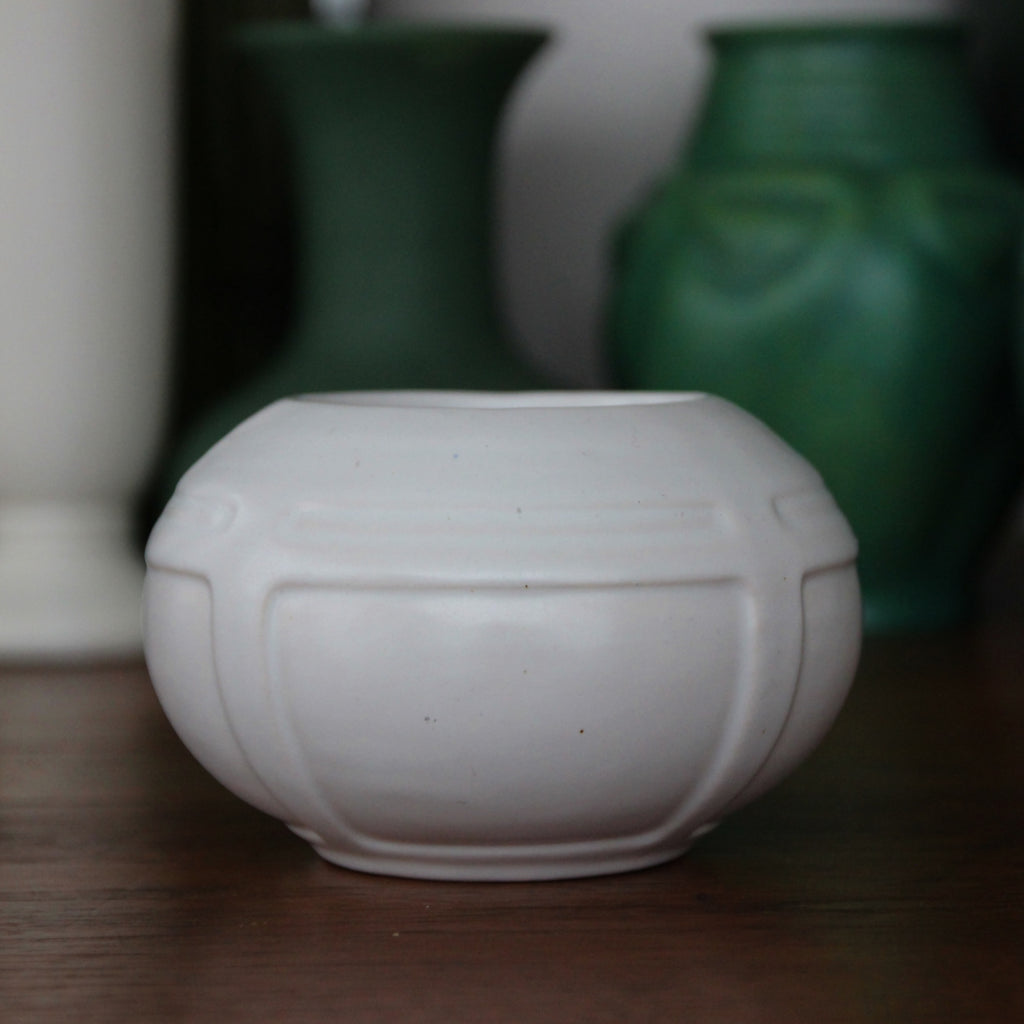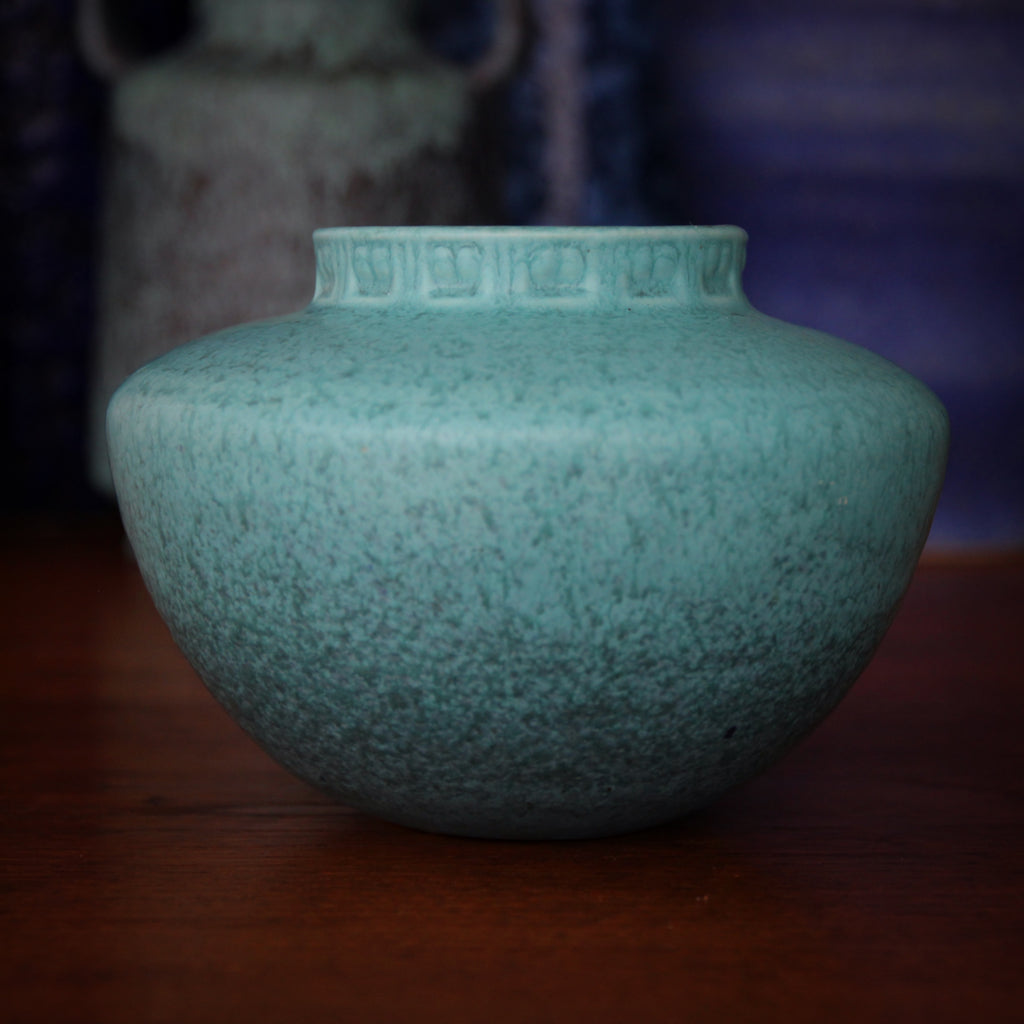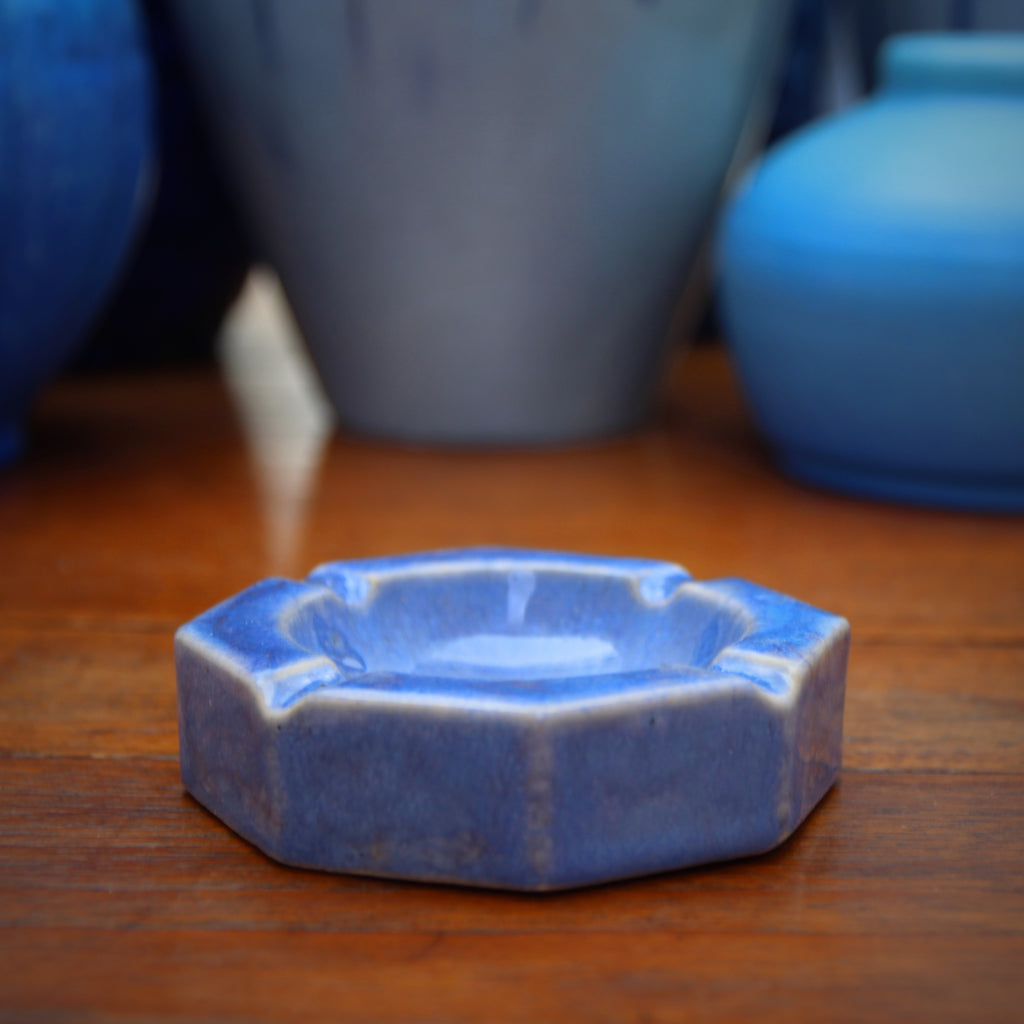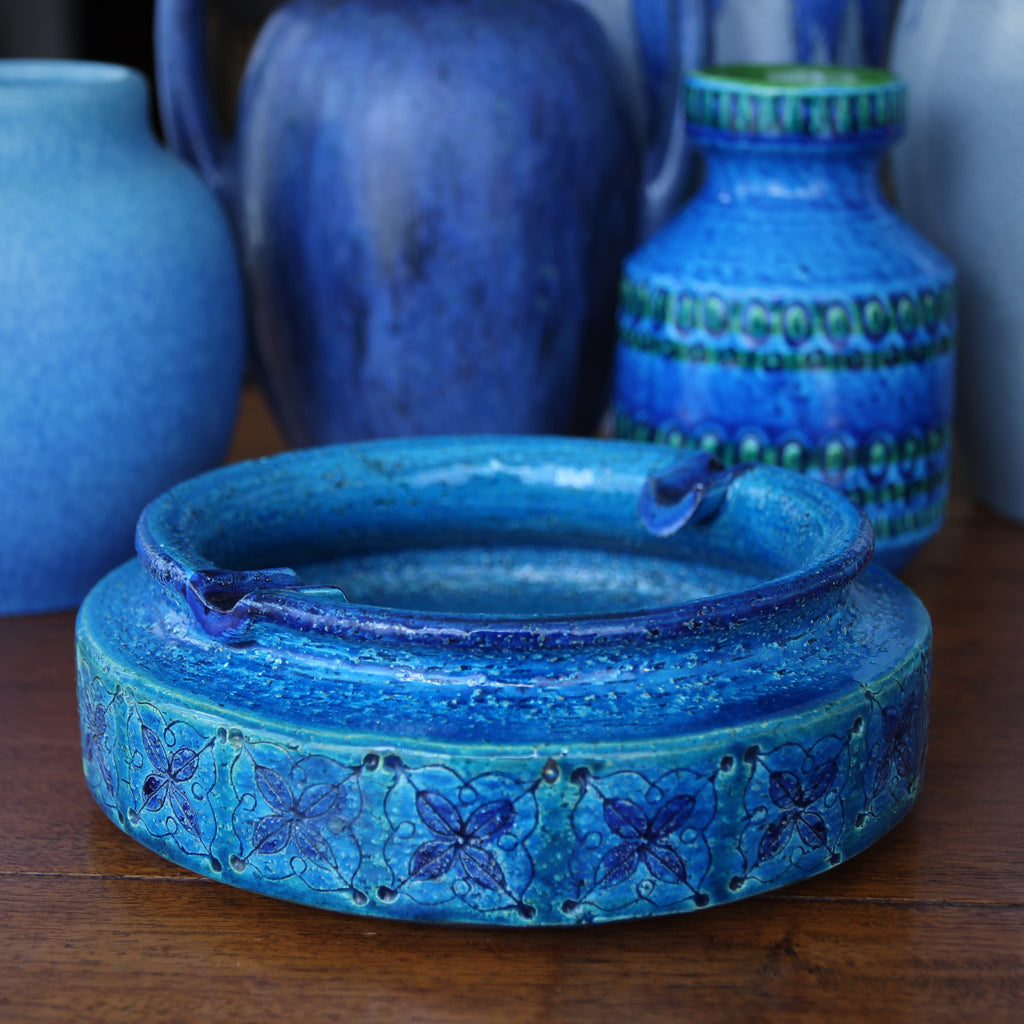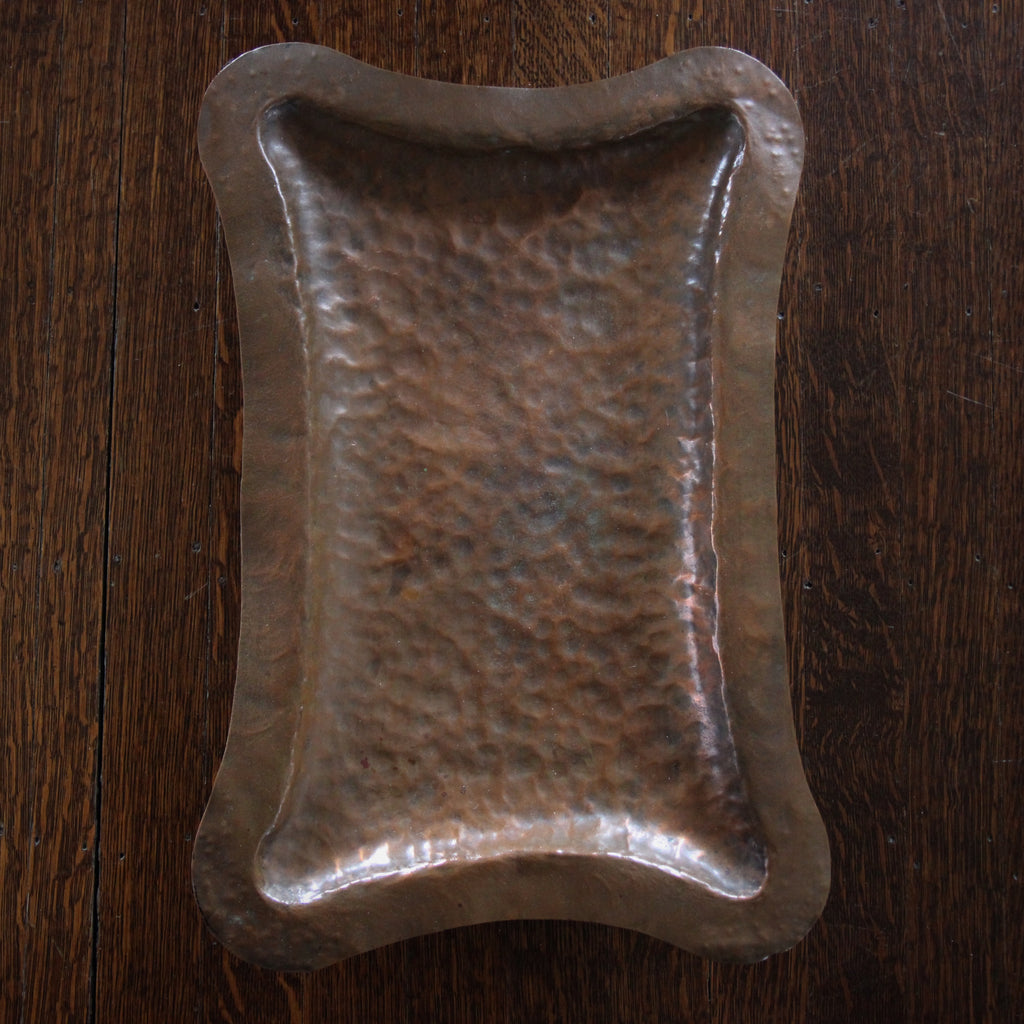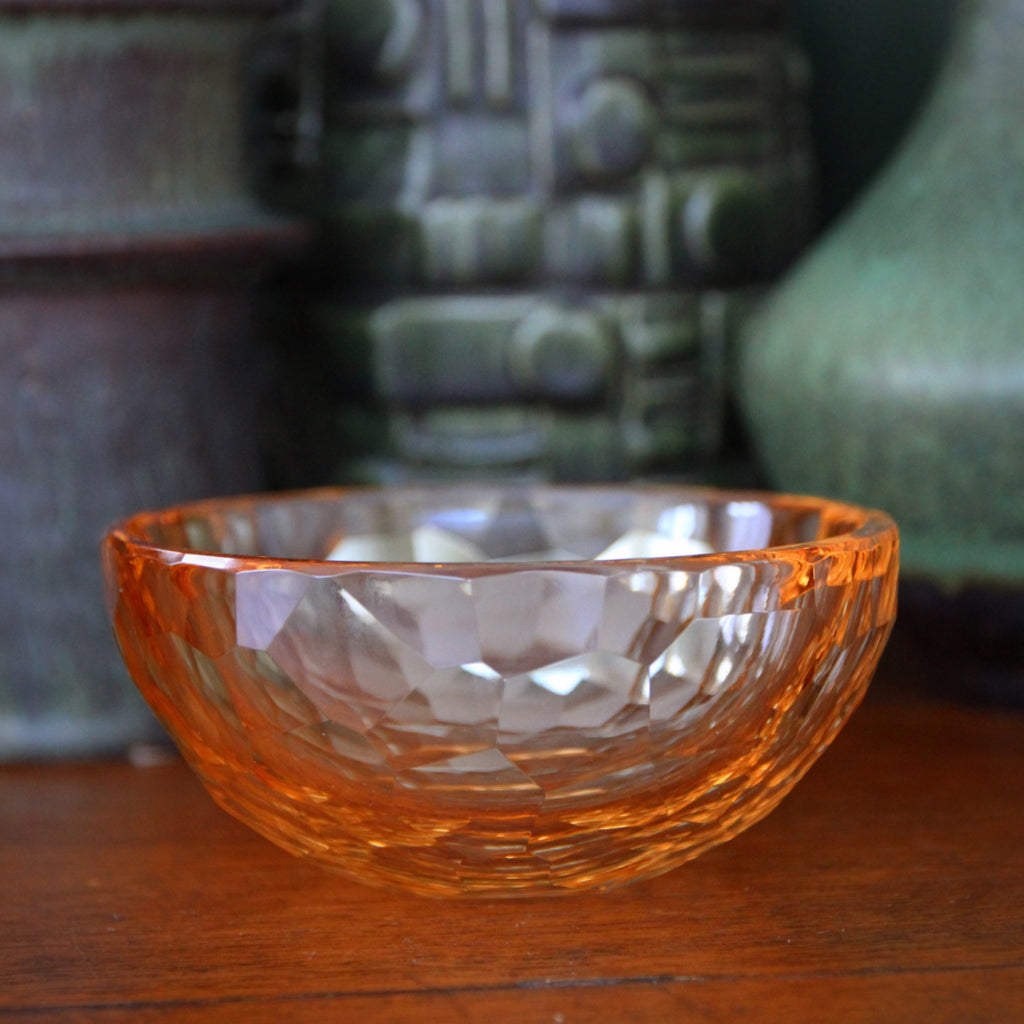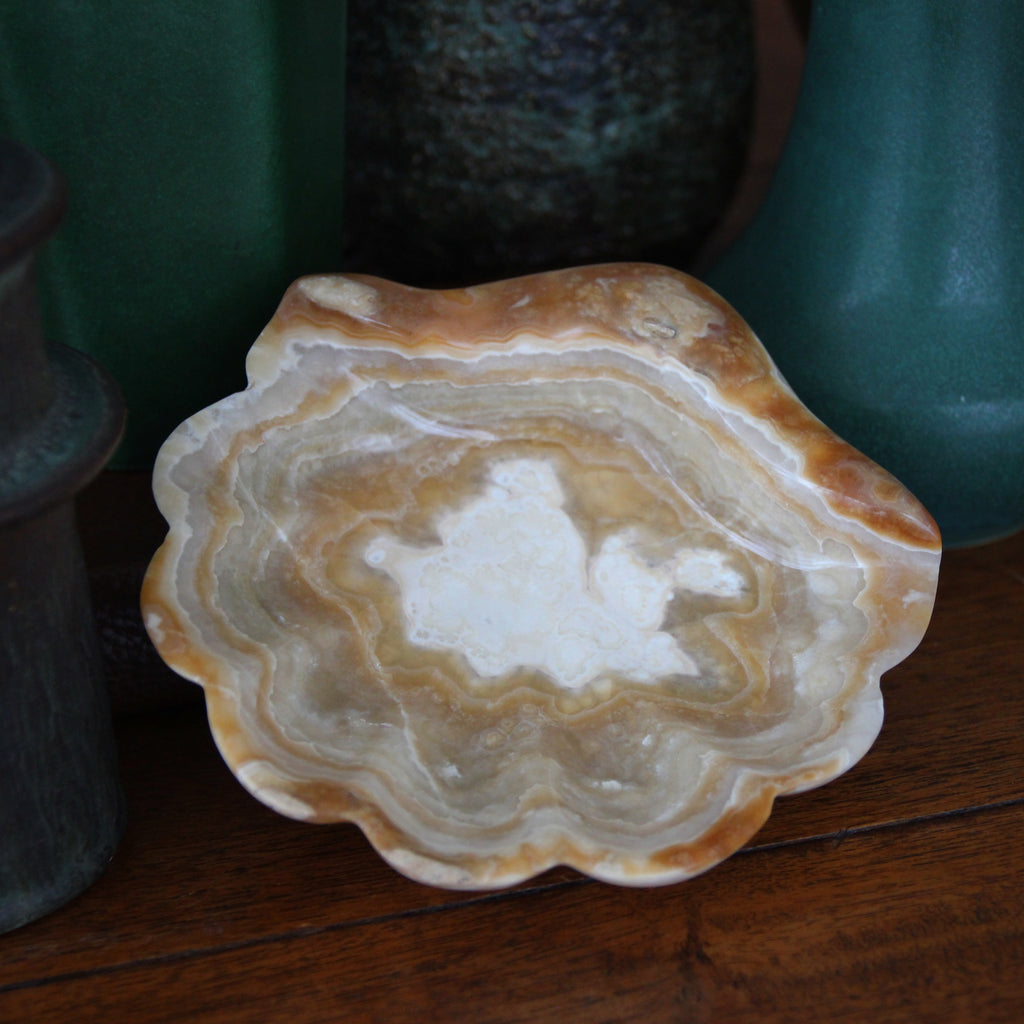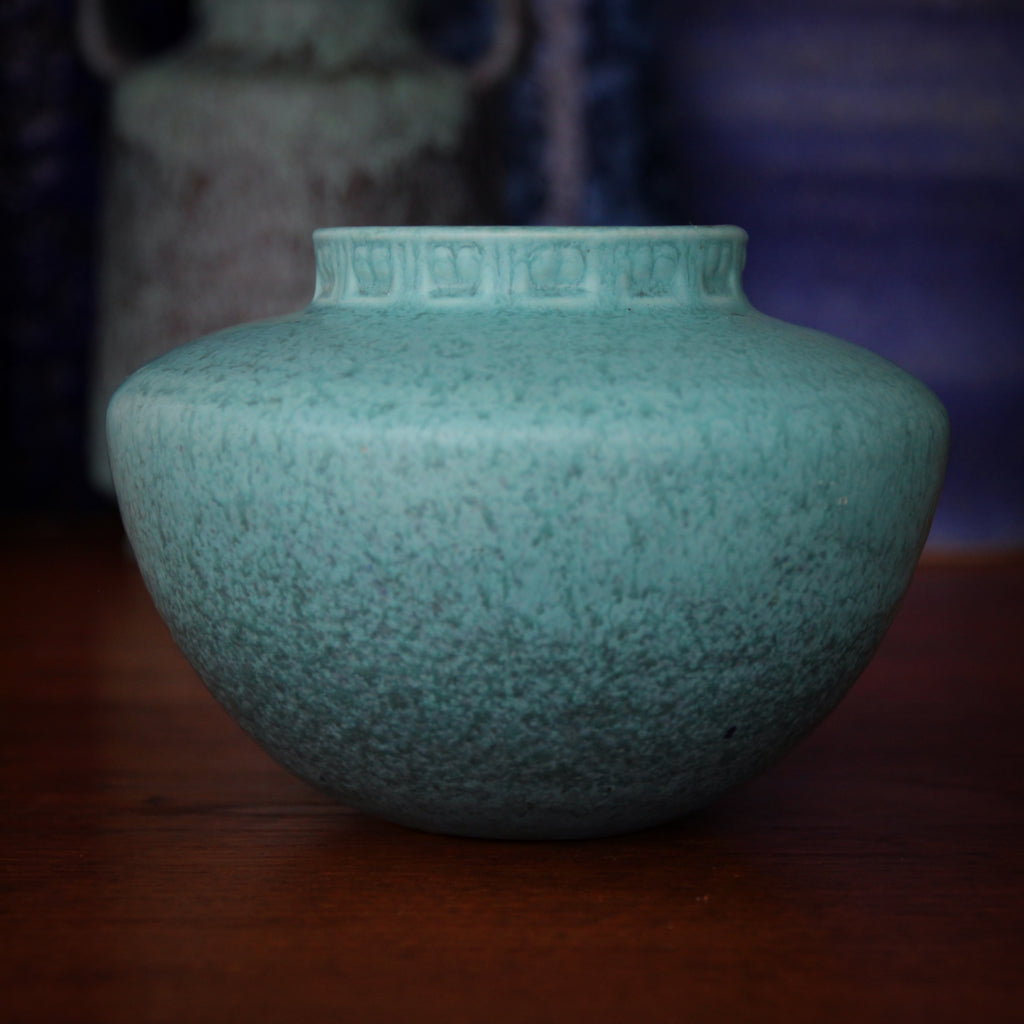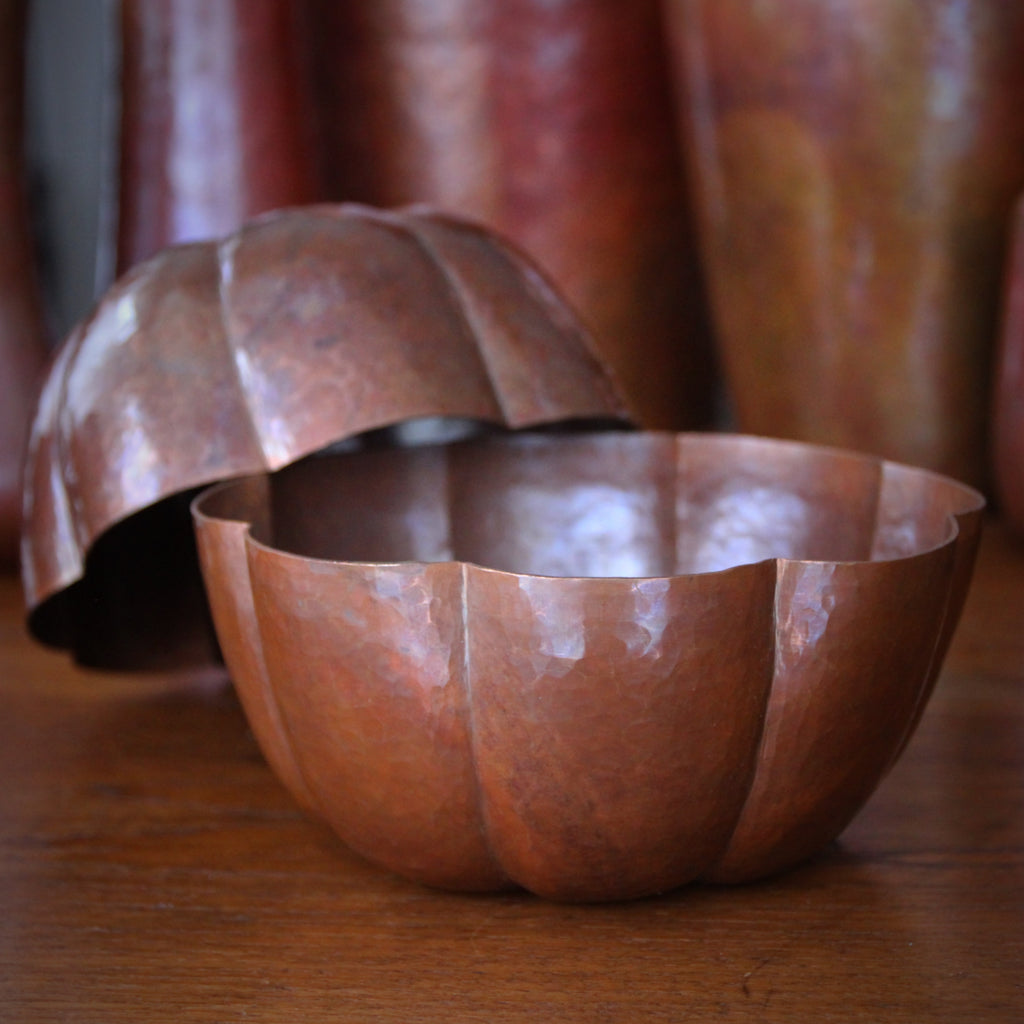JOURNAL — Bowls RSS
January is here and she brings her handsome birthstone, the Garnet. Garnets are not the most exclusive of stones. In fact, some consider them "a poor man's ruby." But I have always loved the dark, red color of the stone. And I like the way that garnets are often assembled—en masse—within gold Bohemian settings (a style called "pavé" in which many small stones are cobbled together, like paving). Garnets are actually a range of stones with differing compositions. They are most often recognized as deep red, though many other colors can be found. Blue garnets are the rarest variety. Garnets are mined in India, Sri Lanka, Myanmar, Russia, Africa and Madagascar, and within Canada and the United States. Some "species"...
Roseville
Roseville's ceramics legacy is divided into several different "periods" of output (Early-, Middle-, and Late-) and their highly-varied design lines over many years. The company began in Roseville, Ohio, in 1890, making "utilitarian wares": crocks, flowerpots, cuspidors. In 1898, Roseville purchased a larger ceramics factory in Zanesville, Ohio (some 10 miles away), and, by 1900, had expand into a range of higher-end, hand-painted art wares. Designer Frederick Rhead joined the company as Art Director (1904-1908) and had an enormous impact on "aiming" the company in the right direction. Frederick's brother, Harry Rhead, took the reins in 1908 and created several profitable lines. Then, in 1918, Frank Ferrel became Art Director (for the next 30 years) and oversaw the explosive creation...
Marblehead
In 1904, Dr. Herbert Hall opened a "handicraft shop" at his sanatorium in Marblehead, Massachusetts. His goal was to provide occupational therapy—woodcarving, weaving, metalwork, ceramics making— for female patients committed with "nervous disorders." He believed that creative work would have a curative and "normalizing" effect upon his patients. Arthur Eugene Baggs, an 18 year old ceramics student from Alfred University (in Western New York State), worked with the Marblehead patients during his summer break in 1905. At the end of the summer, when he should have been returning to school, Baggs was induced to stay permanently—to "professionalize" and manage the hospital's ceramics studio. Alas, most of the patients did not possess sufficient talent to produce high-quality wares and, in 1908,...
Good Friday
Ancient Jewish burial practices involved washing the body, anointing it with perfumes, oils and spices, and wrapping the body in linen. In the Good Friday Gospel accounts of Jesus's burial, it was the women who performed these rituals. Jesus's burial preparation was complicated by the fact that he died on a Friday afternoon, just as observant Jews were preparing for the pending Sabbath (which would begin at sundown). So Jesus was placed in the tomb quickly on Friday; the women planned to return on Sunday (after the Sabbath) to finish their work. The English Arts & Crafts two-handled pot, shown above, makes me think of the type of vessel (perhaps with the addition of a cover) in which the women...
Saint Patrick's Day
Saint Pádraig, the patron saint of Ireland, was from a Roman-era British family, born in (it is speculated) 385 AD. His father was a deacon and his grandfather a priest. At sixteen, Patrick was kidnapped and shipped as a slave to Ireland where he spent six years as a shepherd. In his Confessio, his spiritual autobiography, he recounts a dream in which God instructed him to escape and head for the coast where a boat would be waiting for him. He did as he was instructed and returned to Britain where he joined the seminary, preparing to take holy orders for the priesthood. In 432, now a bishop, Patrick returned to Ireland, answering a calling to convert the Irish pagans...
Feeling Blue - IX
We end our exploration of America's Blues with this substantial and handsome Italian immigrant (make that "import")—a Bitossi ceramic ashtray. Bitossi family members had been active in ceramics-making—on the outskirts of Florence— since the time of the Renaissance. Like many ceramics legacies, they started by producing "utilitarian" objects: roofing tiles, floor tiles, architectural trim. In 1921, Guido Bitossi founded the ceramics workshop we know today, venturing into artistic, decorative objets used to decorate the home. After World War Two, the company began a new chapter under the artistic leadership of Aldo Londi (1911-2003). He executed and oversaw Bitossi's production of Modernist ceramics—perfectly timed to catch the big, post war decorating wave. Londi designed product himself; he also hired cutting edge...
Winter White - III
This creamy, satin glaze is reminiscent of a bank of snow. Shown above, an Art Deco ashtray made in the Thirties by Keith Murray for Josiah Wedgwood, Stoke-on-Trent, England. Keith Murray had a fascinating life—and he's one of the pillars of British Art Deco Modernism and industrial design. He was an architect, aviator, ceramicist, silversmith, and glass designer. Murray was born in Auckland, New Zealand, in 1892. He began his working life as a draughtsman for an Auckland architectural firm. His side passion was the pioneering field of amateur aviation and he was an officer in the Aero Club of New Zealand. When World War One began, Murray joined the English RAF and was deployed as a pilot in...
A Clean Start
Let's continue our "clean start" to the New Year—with another piece of clean, matte white pottery from the Thirties. Shown here, a "paneled" Art Deco bowl finished in a satiny matte white. It was made by Roseville (at this point located in Zanesville, Ohio).
There's something about matte white pottery. It is fresh, elegant, immaculate. And the white coloration allows the form of the piece to shine-through without distraction. Of course, a collection of pieces—within a palette of whites—makes for a stunning (and clean) presentation in nearly any interior aesthetic. This smallish, compact piece would provide excellent punctuation along the front row of the assemblage.
211 Days . . . And Counting
211 days until Saint Paddy's Day! Thus, what better time to share this handsome Irish ceramic bowl, made in the Sixties. Modernist, indeed, but decorated with fascinatingly ancient (and timeless) Irish Celtic knots. This bowl was made by Wade (an English ceramics company) in its Irish workshop which opened in 1946 (in Ulster, Northern Ireland). The designer was James Borsey (1920-1977). The line, called "Celtic Kells," was comprised of six different pieces and was inspired by decoration in the illuminated manuscript, The Book of Kells (c. 800), which can now be seen in the Trinity College Library, Dublin. This line was made in very limited production runs—and only for a couple of years in the Sixties. Much of the production was...
Three Little Bowls
Here is a trio of bowls to give your next dinner party a lift! These three bowls, "squeezed" into their triangular shapes while the glass was still hot and pliable, are finished with a heavy "mirror fade" silver rim. They were made by Dorothy Thorpe in the Sixties—who would purchase quality glass "blanks" from other manufacturers and decorate them with her signature silver trim. These three bowls are great for nuts, candy, or assorted trimmings on a sundae bar.
For the Modernist Bar Cart
Perfect for a bowl of ice—on a Fifties Modernist bar cart—this footed glass bowl is simple, elegant and just the right size. It also could be used to serve nuts or candies. The 22 karat gold band around the top rim adds a confident measure of glamour. It measures six inches across and holds 24 fluid ounces. Click on the photo above to learn more about it. Though our Greenwich Village store is now permanently closed, LEO Design is still alive and well! Please visit our on-line store where we continue to sell Handsome Gifts (www.LEOdesignNYC.com). We also can be found in Canonsburg, Pennsylvania, at The Antique Center of Strabane (www.antiquecenterofstrabane.com). Or call to arrange to visit our Pittsburgh showroom (by...
Poole Pottery
The town of Poole, in the county of Dorset, lies along the Southern seacoast of England. In 1873, Jesse Carter purchased an existing "tile manufactory" along the quay (British English for "dock" or "pier"). Around the Turn-of-the-Twentieth-Century, the workshop started making art pottery wares in the Art Nouveau style. After WWI, Poole (still called Carter, Stabler & Adams) embraced jazz-age Art Deco. Around this time, Poole also formed a creative alliance with members of the Bloomsbury Group including Duncan Grant, Roger Fry and Vanessa Bell (Virginia Woolf's sister). Designs evolved into Post-War Modernism after WWII. During all this time, the factory continued to make ceramic tiles. In fact, Poole supplied much of the ceramic tiling for London Tube stations in...
Mirror, Mirror
Dorothy Thorpe (1901-1989) was a Mid-Century Modernist glassware decorator. She never manufactured any items herself; instead, she purchased "blanks" from established glassware (and ceramics dinnerware) makers to which she added her own decorative spin. One of her signature styles was glassware with metallic "mirrored" banding at the rim. This banding could be produced with a crisp edge or a softer "mirror fade" edge. It seems that Dorothy Thorpe was rather inconsistent when it came to marking her wares. Perhaps this was the result of sourcing products (the "blanks") from so many disparate manufacturers. Or it could be the result of her using so many different decorating processes to create so many differing styles. Sometimes she sand-blasted her initials onto...
Hammered Copper
Copper has been hammered in Mexico since Pre-Columbian times. Even today, there are certain regions, like Santa Clara del Cobre, where artisans still work the copper—usually in small, home-based "cottage industry" settings. Fathers and sons (and grandsons to follow) have kept their family workshops going for decades. Each workshop usually focuses, specializes, in a certain type of work: perhaps small, delicate vessels, perhaps naturally-rendered fruit shapes, perhaps large, "macho" urns and heavy vases. Each piece is "raised" from a single ingot of copper: repeatedly heated in a bonfire on the end of a tongs and beaten with a series of various-peen hammers. An anvil might be the only other "tool" used. Nevertheless, the metalsmith is able to achieve a balanced...
Baby Colors
In "the old days" (and even when I was a baby, in the Sixties) it was customary to give a newborn child a baby gift. Sometimes it was at a Christening or Bris, other times it was during the early weeks of a child's life. Certain types of gifts were most popular: cutely-coordinated baby outfits, monogrammed sterling silver rattles or teething rings, jewelry (like an "Add-a-Pearl" necklace for a girl), or baby feeding accoutrements (porridgers, decorated baby bowls, little utensils). Most often, the gifts had a small whiff of luxury about them—something slightly precious or decorative—and were a small but practical indulgence (which a parent may not have invested-in himself or herself). And, very often, the gifts were highly gender-specific:...
Quit or Do It In Style
I have never liked smoking. I just don't understand the allure of bathing one's lungs in carcinogenic smoke. One's first cigarette—and the disgust it induces—should be enough to preclude a second one. The act seems so foreign to me. However, I must admit, I really do like many smokers. And I love the accoutrements of smoking: tobacco jars, pipe holders, smoking cabinets, humidors and cigarette cases. And, of course, beautiful ashtrays. Shown above, a large Italian Modernist ceramic ashtray—impressed, incised and glazed in a "Rimini Blu" glaze. It was designed by Aldo Londi for Bitossi and made in the Sixties. The Bitossi family had been making ceramics in Tuscany since 1871. In 1921, Guido Bitossi founded his own pottery workshop outside of Florence....
Autumn is Here - part XI
The Art Deco ceramic rosebowl, shown here, made by Roseville in the Thirties, is an amalgamation—an artful melding—of two very different aesthetic sensibilities. First there is the form: a high-concept, industrio-mechanical sculpture, reminiscent of the vents on a piece of machinery (if not the gills on a robotic, Jules Verne shark). It's a hard, cold structure—practical, technical, efficient. (And a little scary, like a piece of equipment on the Star Wars Death Star.) Laid upon that is the second factor, the glaze. Its soft, mottled, earthy and organic coloration belies the hard, industrial form beneath. This juxtaposition of the gentle and the stern provides a wonderful contrast—a tension—in the final piece. And, as one can see, the glaze...
Autumn is Here - part IV
Even a Non-Canadian is likely to agree: the maple leaf is a beautiful thing. Add to that the splendors of "birdseye" or "curley" maple wood—and let's not forget the wonder of maple syrup. O, Canada!
Shown above, a cast pewter maple leaf "dish," finished with a brassy patina. It could be used to hold rings, cufflinks, collar stays, paper clips, wrapped candies or a stack of business cards.
Going Dutch - Part III
Stylized flowers are used liberally in hand-painted Gouda ceramics, like on this little two-handled bowl dated 1923. A garland of Morning Glories wends its way around the bowl, providing handsome contrast to the dark chocolate and golden mustard glazes which provide the background.
Dorothy Thorpe - II
Dorothy Thorpe was a designer and decorator of American glassware—not a manufacturer. She purchased "blanks" from other glassware companies, those firms which actually made the pieces. Thorpe would then decorate the glassware blanks with her original designs.
Dorothy Thorpe loved traveling to Hawaii and was much-inspired by the islands' native flora. Her first designs, starting in the Forties, featured sandblasted tropical floral patterns. Because these glasses were sandblasted, most of them were also signed in the process. Her later patterns—those with gold flecking and those with silver banding—might have had a Dorothy Thorpe sticker (at one time) though they rarely have lasted through the years. Thorpe's later works are usually found unsigned.
Just a Bowl of Berries
Summer is here—berry season! And whether you collect your berries in your garden, in nearby fields, or at the supermarket, they will look (and possibly taste) better in one of these fancy pressed-glass berry bowls. The set of five bowls, made in the Thirties or Forties, are decorated with starbursts, ribbing, gadrooning, and scalloped rims. They catch the light nicely, providing a little extra halo around your simple Summer dessert. And these bowls are suitable for more than just berries and cream. They will give ice cream a regal lift, bring apple crisp to the next level, and attractively present an assortment of condiments on your festive buffet table.
Trusting One's Senses
After 28 years of buying and selling ceramics, I've gotten more confident in recognizing a nice piece of pottery when I see it. Even when I do not know who made the piece—or when. The Modernist bowl above is such an example.
Much of the pottery I buy was made in the Late-Nineteenth through the Mid-Twentieth Centuries. Most of the pieces I acquire were made by "recognized" workshops with recognizable attributes (and, with luck, a maker's mark). Even ceramic "studio" pieces (that is, pieces made-by-hand in small, artisanal shops) might have recognizable characteristics or bear a discernible signature. Additionally, some glazes, shapes or other idiosyncrasies obviously identify the maker or the workshop to an experienced collector.
Spring Fresh
Need a nice bowl for Spring paper whites? Or a caddy for keys and wallets near the door? Or, perhaps, a stylish water bowl for your dog? This bowl, made in the Thirties by Red Wing (in Red Wing, Minnesota), has plenty of style to match its functionality. The interior is fully glazed—in a fresh, Spring green—which makes it water-tight. The exterior, which is decorated with a bas relief ring of daisies, is first brushed with a matte green stain which is then partially wiped-off, thus accenting the high-low effect of the texturing. Subsequent firing fixes the exterior stain and the interior glaze. This brushing method inspired the pottery line's name, "Brushware."
Clews Blues - V
Although George Clews's "Chameleonware" line was designed in 1914, its production was placed on-hold due to the outbreak of World War One. Artistic genius, David Capper, served and was injured in the war. Eventually, he returned to Clews and picked-up where he had left off: continuing to develop and market Chameleonware in the Twenties. The line—which was produced in dozens of differing painted patterns and colorations—included mottled "solid" art glazes (to emulate Ruskin) or ambitious hand-painted decorations which closely observed popular decorative trends. Very often, these trends were inspired by contemporary, international archeological discoveries—in Persia, Egypt or Asia—which intrigued the public (and, especially, people who might never have the means or opportunity to travel to these far-flung, exotic lands). Authentic "Oriental"...
Bohemian Glass
Bohemia—that region of the Austro-Hungarian Empire that now (roughly) corresponds with the Czech Republic—has long been a center of high-quality glass design and production. This covered glass dresser bowl began its life as a blown "case glass" bowl, that is, two layers of glass bonded together (blue on the outside, clear on the inside). Glass artisans carefully "cut-away" at the blue glass (the top layer) on a cutting wheel, revealing the clear glass below. Properly done, this leaves an attractive pattern of blue glass over the clear glass below.
Shown above, a handsome glass covered "dresser bowl"—useful for storing powder, clips, bands, or other little essentials that might get scattered on a vanity table. It was made around 1920.
Summer Green
I love being surrounded by green! Indoors, outdoors—I find the color relaxing, soothing and so full of life. So it's no surprise that I began building a nice collection of matte green Arts & Crafts pottery as soon as I opened the store in 1995. Interestingly, one of the first pieces I sold (my first week) was a gigantic matte green jardiniere. I have never seen another piece so large (at any price). And I learned an important lesson about marking prices on "statement pieces." The piece above, made by Zanesville around 1910, is finished in a restful matte green glaze. A simple bas relief botanical motif surrounds the bowl—which is perfect for forcing paper whites or collecting pinecones, wine corks...
Tuesday, Two Twenty-Two Twenty-Two
We interrupt our regularly-scheduled programming (Victorian cufflinks) to make note of this exceptional day: Tuesday, Two Twenty-Two Twenty-Two!
Two golden (polished bronze) eggs sit in this rustic cast-bronze nest, lovingly crafted in Canada. Such an interesting desk item will certainly provoke visitors to pick-up and fondle the clutch. The nest, alone, would make a perfect clip holder, ring saver or place to throw your keys near the door. And, of course, the two eggs will forever commemorate this special date.
And now: back to our regularly scheduled programming...
Starting Fresh
It's becoming an annual refrain. With each passing year, I release a wearied sigh and proclaim with great relief: "Well, I'm glad that year is over!" To paraphrase The Queen, it's been a "Lustrum Horribilis"! Half a decade of horror! But Hope springs eternal—especially amongst retailers, who always believe, deep-in-their-bones, that Good Times are just around the corner. "This will be the year!" While I await the abundance, I also appreciate an aesthetic "cleansing of the palette"—a fresh, pure start to the New Year. What could look cleaner, fresher, and newer than a collection of matte white vases bowls and plates? This Art Deco bowl, by Roseville, is trussed in an attractive architectural scaffolding. Finished with a satin white, it provides...
December is Here!
December is here! The final lap of 2021! Experience the Winter's chill, the Holiday bustle, and the sublime Turquoise—the birthstone for the month of December.
Ancient civilizations in Egypt, China, Persia and North America have been mining, collecting and using turquoise for millennia. In the American Southwest, turquoise has been used in jewelry-making and other decorative arts for centuries—and continues to be popular to this day. The name derives from the French word for "Turks"—for it was through Turkey that the first turquoise came to Europe from Persian (Iranian) mines. The Persians used the stone for important decoration in architecture and other objets. They created celebrated ceramics and tilework glazed in a glorious "Persian Turquoise" hue, a color which represented "Heaven on Earth."
William Rowe
Royal Doulton is one of the great British commercial ceramics makers of the Nineteenth and Twentieth Centuries. It was founded in 1815 in London, with factories in Vauxhall and Lambeth. In 1882, the company moved from London to Staffordshire, specifically to the town of Burslem, one of the six towns that make-up Stoke-on-Trent (a powerhouse of 19th Century British ceramics production). Here, with space to grow, Royal Doulton expanded production significantly. 1882 was also the year that artist William Rowe joined the firm, a company which would employ him for six decades (until 1945). William Rowe, a painter, designed ceramic works of all sorts for Royal Doulton pieces—vases, bowls, plates—in a wide range of styles, from the Aesthetic Movement to...
The Perfect Summer
I love visiting the Mediterranean during the Summer. Greece, Italy, Spain or the South of France—it doesn't matter—I love the warm, dry weather and the sapphire blue waters of that ancient sea (and the cultures which surround it). Summer is always that much better when it includes a bit of time on (or near) the Mediterranean Sea. In the handsome city of Monte Carlo, they built a large pier—to both protect the small (expensive) boats inside the harbor and to allow large ships to dock on the outer side. On the sea-facing side of the pier, a large cement structure (called "Solarium Beach") has been designed as a series of gigantic "steps" leading to the water. They allow bathers...
Will Little Nell Live?
Charles Dickens published The Old Curiosity Shoppe as a weekly series in 1840 and 1841. It proved so successful—on both sides of the Atlantic—that frantic New Yorkers stormed the pier when the final installment arrived by ship from England. They all wanted to know: "Will Little Nell Live?" The story concerns 13 year old Nell, a kind and loving girl who was orphaned after her parents died in poverty. She is taken-in by her grandfather and they live in an antiques shop. She is a lonely girl; her only friend is Kit, a good boy who works in the shop, whom Nell teaches to write. Kit secretly falls in love with Nell and commits himself to keeping her safe. But...
Rustic Character
Yesterday, we shared one of the finest trays in our collection. If one might call that one "Beauty," the shallow bowl, shown above, might be called "The Beast." But a beast is not without its usefulness—or its charm. Rustically hand-hammered copper is fashioned into a shallow bowl. Set upon a refectory table, it would be perfect for holding fruit, bread or a collection of decorative objects—pinecones, wine corks, seashells or glass balls.
Snowball
I have always liked matte white pottery and keep a personal collection myself—on the wide windowsill over my kitchen sink. The simplicity of color contributes a fresh and clean look without appearing industrial or sterile. And the form of each piece can be appreciated clearly, without the optical effects (or distraction) which darker colors sometimes contribute. When assembling a white ceramics grouping, some people are sticklers for maintaining the purity of one particular shade of white—be it cool, warm, bluish, pinkish, or yellowish. I appreciate this discipline, but am a little more relaxed about my personal grouping. I find that, once you have enough pieces, a "palette" of whites can look wonderful together (within a controlled range). For example, if you...
A Peach of a Bowl
Occasionally, I'll uncover something which I have never seen before. I will know nothing about its age, maker, or place of origin. I'll have no intellectual reference by which to value it. But I will recognize something of quality—and a little voice which says, "Don't put this back." This bowl is just such an item. I found it at a house auction in nearby Ohio. It is clearly Modernist in design. The weight of the crystal and the quality of the hand-cutting are superb. And the peach colored crystal is sublime. Is it something from the Modernist Period? Or is it something made—indeed, well made—recently (or even today)? I'm not a glass expert, nevertheless, I acquired the piece. Whether it's recent or vintage,...
The Sea in Siena
Siena, in the heart of Tuscany, is known for many things: Saint Catherine (Doctor of the Church), the annual Palio horserace (in the city's expansive square), the grand Cathedral (completed in 1263), and, of course, the coveted honey-caramel Siena marble, used to make the bowl shown here.
Siena marble is hand-carved into this handsome (and heavy) Italian bowl—fashioned in the shape of a scalloped seashell (often an attribute which identifies Saint James). Use it as a handsome solution for holding business cards, clips, candies, cigarette ashes, or even the contents of an emptied pocket.
Welcome, October!
Welcome, October, and your birthstone the Tourmaline. Today we know October as the tenth month of the "modern" Julian and Gregorian calendars. But it wasn't always this way. In the period of the Roman Empire (which straddled the lifetime of Christ), October was the eighth month—made apparent by October's root word, "Octo" (which means "Eight"). Interestingly, in France, Octobre is sometimes abbreviated as "8bre." October's birthstone, the Tourmaline, is a semi-precious gemstone, a "crystalline boron silicate mineral." It can be infused with traces of a wide variety of different metallic elements—each of which results in a different color possibility. Thus, tourmaline can be mined in many different colors: black, brown, and every color of the rainbow (red through violet) and even bi-colored variations....
Hand-Raised Copper - part III
Here's something a little different: a "Lotus Bowl" with nicely-scalloped sides. Raised from a single ingot of copper—just like the vases we've shown—it was made "freeform" with just a pair of tongs, hammers and an anvil. Click on the photo above to learn more about it. More hand-hammered copper items in the days to come. Though our Greenwich Village store is now permanently closed, LEO Design is still alive and well! Please visit our on-line store where we continue to sell Handsome Gifts (www.LEOdesignNYC.com). We also can be found in Pittsburgh's historic "Strip District" at Mahla & Co. Antiques (www.mahlaantiques.com) or in Canonsburg, Pennsylvania at The Antique Center of Strabane (www.antiquecenterofstrabane.com). Or call to arrange to visit our Pittsburgh showroom (by private appointment only)....












